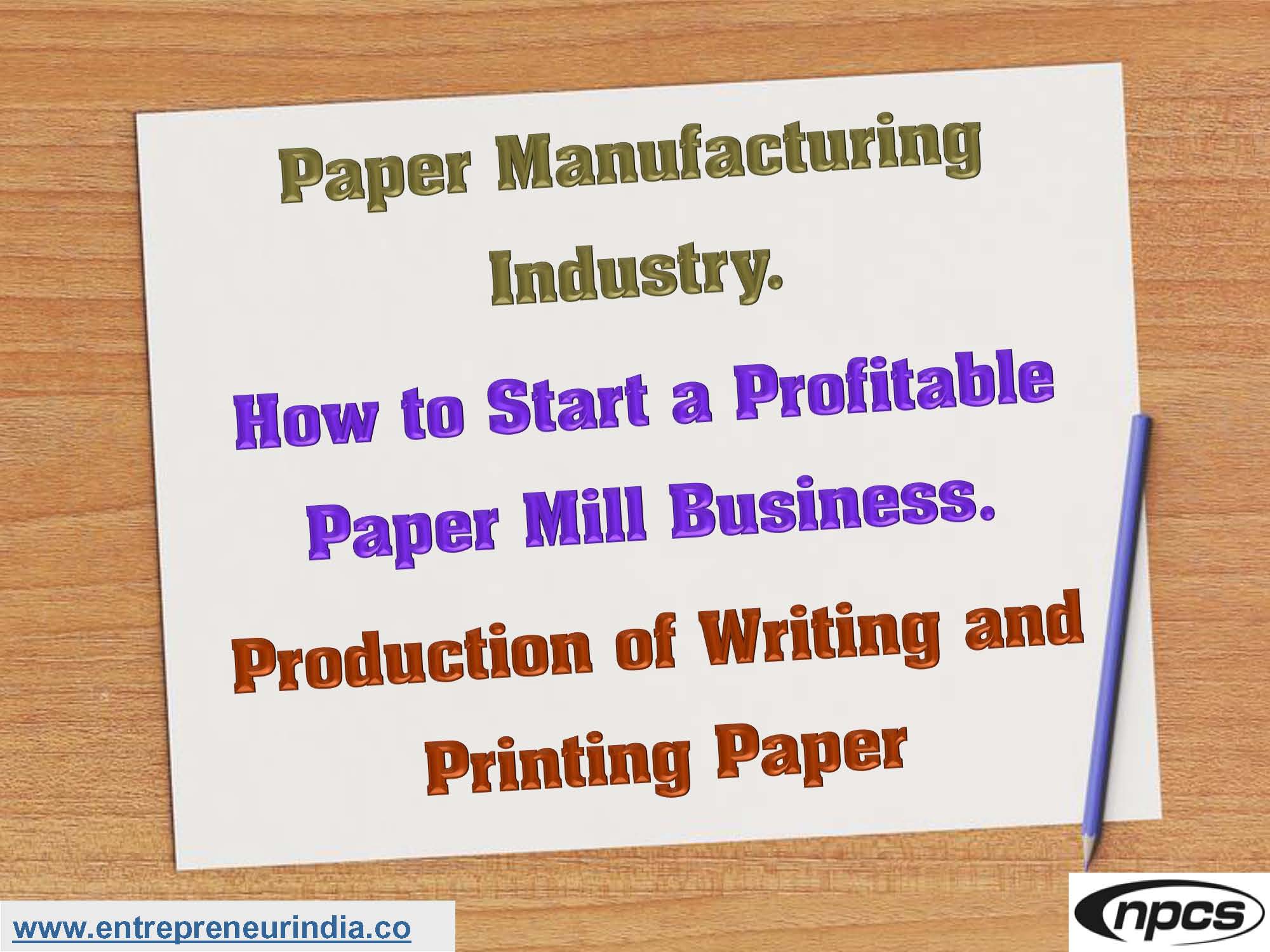
The Paper Manufacturing Industry plays a critical role in supporting global communication, packaging, education, and sanitation needs. Despite the rise of digital alternatives, the demand for paper products remains significant across sectors such as printing, tissue, packaging, and industrial processing. With environmental concerns growing, the shift toward recycled paper and eco-friendly production practices has also revitalized the sector. The Paper Manufacturing Industry continues to innovate in material sourcing, production efficiency, and sustainability, making it an excellent avenue for long-term investment and business development.
Types of Paper Produced
The Paper Manufacturing Industry produces a wide variety of paper types, each tailored to specific market segments:
-
Printing and Writing Paper: Used in offices, books, newspapers, and education
-
Tissue Paper: Includes toilet paper, napkins, and facial tissues
-
Packaging Paper: Kraft paper, corrugated board, and paper bags
-
Industrial Paper: Filter paper, insulation board, and specialty coatings
-
Recycled Paper: Made from post-consumer or industrial waste for eco-conscious buyers
This wide range of end products ensures a diversified market and stable revenue streams for manufacturers.
Key Raw Materials Used
The essential raw materials in the Paper Manufacturing Industry include:
-
Wood Pulp: Derived from softwood or hardwood trees
-
Recycled Paper: Used in producing newsprint and packaging paper
-
Chemicals: Bleaching agents, fillers (such as clay and calcium carbonate), sizing agents
-
Water: Heavily used throughout the pulping and papermaking process
-
Energy: Both electricity and steam are required for drying and processing
Due to high consumption of natural resources, many units now integrate closed-loop systems for water recycling and energy optimization.
Manufacturing Process Overview
The standard paper production process in the Paper Manufacturing Industry follows these core steps:
-
Raw Material Preparation
Wood chips or recycled paper are treated to extract cellulose fibers. Debarking, chipping, and pulping are involved. -
Pulping
Mechanical or chemical pulping breaks down raw materials into pulp. For higher-quality paper, chemical pulping is preferred. -
Bleaching and Cleaning
The pulp is washed and bleached to achieve desired whiteness and remove impurities. -
Sheet Formation
The pulp is diluted and fed onto a moving wire screen where water drains away, leaving a wet paper mat. -
Pressing and Drying
The paper mat passes through rollers to remove moisture, then dried with steam-heated rollers. -
Finishing
Coating, calendaring (smoothing), cutting, and packaging are performed to produce the final paper product.
The choice of method (chemical, mechanical, or recycled) depends on the desired paper grade and end use.
Required Machinery and Equipment
To set up a facility in the Paper Manufacturing Industry, the key machinery includes:
-
Pulping equipment (hydrapulper, refiners, screens)
-
Paper machines (Fourdrinier or twin-wire former)
-
Press section and dryer section
-
Calendaring and coating machines
-
Slitters and rewinders
-
Boilers and water treatment systems
-
Pollution control equipment (scrubbers, effluent treatment plants)
Advanced automation and SCADA systems are also being adopted to improve efficiency and reduce manpower dependency.
Infrastructure and Space Needed
Setting up a medium-scale paper plant in the Paper Manufacturing Industry typically requires 15,000 to 50,000 sq. ft., depending on capacity and integration level. You will need:
-
Raw material storage yards
-
Pulping and paper production halls
-
Chemical storage and handling rooms
-
Drying and finishing section
-
Water and effluent treatment plant
-
Warehouse and administrative office
Proximity to raw material sources like forests, urban waste paper suppliers, or agro-waste producers can significantly reduce logistics costs.
Investment and Profitability
The investment required in the Paper Manufacturing Industry depends on the scale of operations:
-
Small-scale plant (recycled paper-based): ?75 lakhs – ?1.5 crores
-
Medium-scale plant: ?3 – ?7 crores
-
Large-scale integrated unit: ?10 – ?50 crores+
Paper sells at ?30 to ?120 per kg depending on type (tissue, printing, or kraft). With optimized operations and strong distribution, manufacturers can expect profit margins of 15–25%, and the return on investment usually materializes within 2–4 years.
Licensing and Regulatory Requirements
To establish a unit in the Paper Manufacturing Industry, the following licenses and certifications are essential:
-
MSME/Udyam Registration
-
Factory License
-
GST Registration
-
Consent to Establish and Operate (from State Pollution Control Board)
-
Fire and safety compliance certificates
-
ISO 9001, ISO 14001, and FSC certification (for quality, environment, and sustainability)
-
Water usage permissions and effluent management plan
Given the high water and energy usage, sustainability compliance is becoming critical for long-term operational approval.
Market Demand and Customer Segments
The Paper Manufacturing Industry caters to a wide range of customers:
-
Schools, colleges, and publishing houses
-
E-commerce and retail packaging firms
-
FMCG brands for wrapping and labeling
-
Restaurants and hotels for tissue and napkin supplies
-
Government departments and stationery suppliers
-
Exporters of specialty and recycled paper products
There’s increasing demand for biodegradable paper packaging as a replacement for plastic, especially in FMCG and retail sectors.
Opportunities for Expansion and Diversification
Growth in the Paper Manufacturing Industry can be achieved through:
-
Recycled Paper Plants: For eco-friendly brands and export
-
Tissue Paper and Napkins: High-margin consumer products
-
Value-Added Coated Paper: For premium printing and packaging
-
Corrugated Board and Kraft Paper: For the booming e-commerce market
-
Biodegradable Tableware or Packaging: Using paper pulp as raw material
Joint ventures with FMCG brands or investments in in-house recycling units can further enhance margins and market access.
Conclusion
The Paper Manufacturing Industry is not only thriving but also transforming into a more sustainable and tech-driven sector. From office stationery and education to green packaging and hygiene products, paper continues to be a fundamental material in the global economy. With the right mix of technology, resource planning, and environmental compliance, setting up a paper manufacturing business can lead to high profitability, long-term stability, and strong export potential.
Niir Project Consultancy Services
An ISO 9001:2015 Company
106-E, Kamla Nagar, Opp. Spark Mall,
New Delhi-110007, India.
Email: npcs.ei@gmail.com , info@entrepreneurindia.co
Tel: +91-11-23843955, 23845654, 23845886, 8800733955
Mobile: +91-9811043595
Website: www.entrepreneurindia.co , www.niir.org





